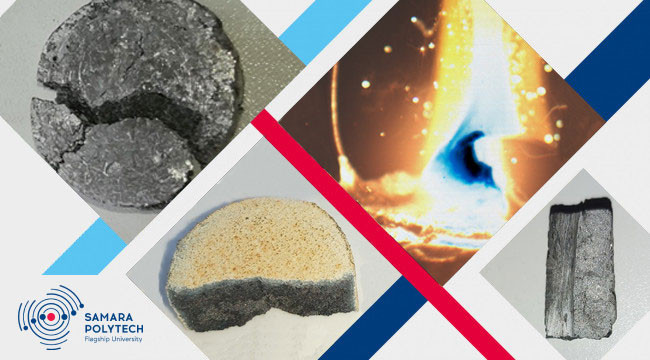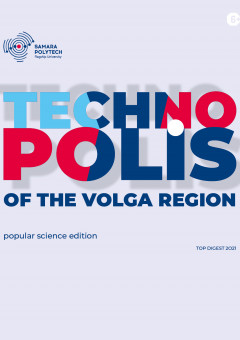Samara Polytech scientists developed an energy-saving method for producing composites
Materials synthesized on its basis have a number of important advantages

Using a new method, the Samara Polytech scientists designed a number of composite materials: TiC-Al (titanium carbide with aluminum), Ti3AlC2-Al (titanium carboaluminide with aluminum), Ti3SiC2-Cu (titanium carbosilicide with copper).
Scientists of the Department of Metallurgy, Powder Metallurgy, and Nanomaterials of Samara Polytech designed the composites on the basis of the methods developed by them, that makes it possible to use the obtained compounds under conditions of increased wear and tear, in corrosive environments. More recently, a team led by the head of the department, Professor Alexander Amosov received a patent for a unique technology (https://new.fips.ru/registers-doc-view/fips_servlet?DB=RUPAT&DocNumber=2733524&TypeFile=html).
The new method is based on the highly exothermic reaction of self-propagating high-temperature synthesis (SHS), that results in the production of ceramic compounds in the form of a porous skeleton of any shape. In the process of synthesis, the ceramic skeleton is self-heating up to the temperatures of 2500 - 3500° C. At such temperatures, the metal melt contacting with the skeleton is absorbed into its porous-capillary structure completely filling the entire pore space. When cooling down, the metal crystallizes in the pores. The skeleton composites with different volume fractions of metal and ceramics can be obtained this way.
The main advantage of the proposed technology is its energy efficiency - no heat is required to synthesize a ceramic compound. The developed technology makes it possible to vary the properties of the obtained composites by selecting the target ceramic compound and the metal or alloy with which the ceramics will be impregnated. Besides, there is no need for complex and expensive pressing equipment or reactors to impregnate the resulting skeleton with a metal melt.
«Using our method, we have already designed composite materials such as titanium carbide with aluminum, titanium carboaluminide with aluminum, and titanium carbosilicide with copper,» says Emil Umerov, a member of the research team, a postgraduate student of the Department of Metallurgy, Powder Metallurgy, and Nanomaterials. «A series of tests for strength, hardness, etc. was conducted For example, titanium carbide with aluminum has successfully passed the heat resistance tests, - it survived the heating up to 900 degrees Celsius, did not collapse or lose its shape. And this is despite the fact that aluminum melts at 660 degrees Celsius. Thus it means that it was liquid inside the ceramics. And more recently, another composite was obtained, now based on tin. Thus, we have confirmed that our technology works on other metals as well.»
The obtained composites can be widely used in conditions where high wear resistance, low friction coefficients, and light weight are required. Titanium carbide and carboaluminide with aluminum can be used to make plain bearings, high efficiency automobile engine pistons or liners, automobile brake discs, or even the cutting or machining tools more efficient. And titanium carbosilicide with copper is rather promising as an electrical contact material suitable for the production of current collectors for trains and trams.
For reference:
Samara State Technical University (SSTU, Samara Polytech) as a flagship university offers a wide range of education and research programs and aims at development and transfer of high-quality and practically-oriented knowledge. The university has an established reputation in technical developments and focuses on quality education, scientific and pragmatic research, combining theory and practice in the leading regional businesses and enterprises. Education is conducted in 30 integrated groups of specialties and areas of training (about 200 degree programs including bachelor, master programs and 55 PhD programs) such as oil and gas, chemistry and petrochemistry, mechanics and energy, transportation, food production, defense, IT, mechanical and automotive engineering, engineering systems administration and automation, material science and metallurgy, biotechnology, industrial ecology, architecture, civil engineering and design, etc.
